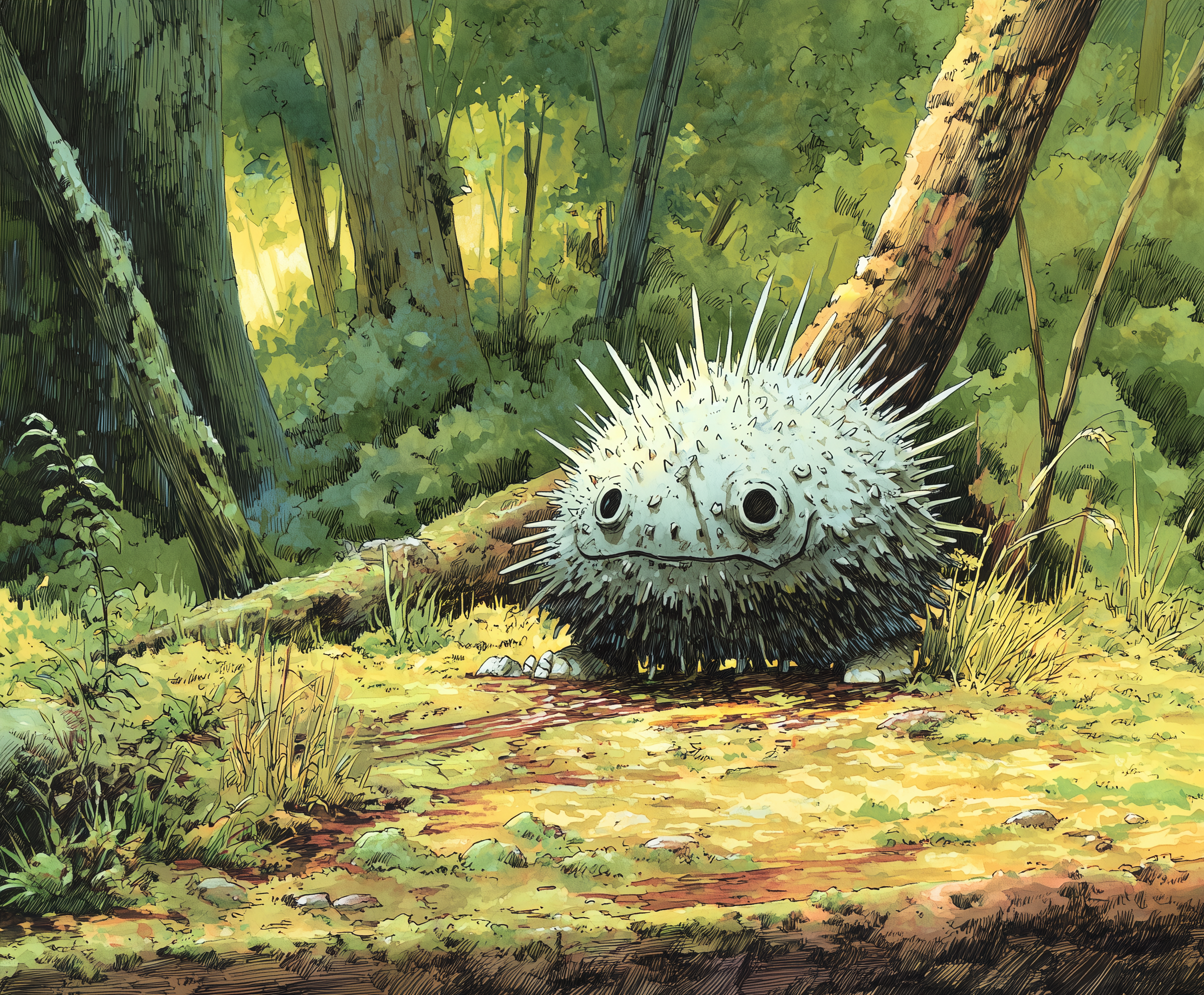What is a Futter and Gump?
Futter and Gumps are two forms of the same species. The first phase is their adolescent stage, commonly known as Futters, they are small winged caterpillars with small wings at their mid-sections. They gained their name by the distinct and somewhat comical *futter* sound they make as they meekly puff about using their meek wings to ambulate around.
The second phase, their fully grown adult stage, is known as the Gump. Unlike many creatures that metamorphose between two drastically distinct phases, the Futter decidedly does not turn into a beautiful butterfly-like form.
Instead, it becomes the Gump, a form in which they’ve shed their wings and become ground-dwelling dough balls. The Gump’s new form resembles a sort of sensory ball, albeit more dome-shaped with fuzzy spike-shaped protuberances. They spend their days slorphing about picking up whatever nutrients or detritus is lying about. In their own goofy way, they are somewhat adorable as they roll about, their forms jiggling about as they enjoy their days in ignorant bliss.
Neither of these forms is dangerous in any sense; due to a lack of predators in their native habitats, neither the Futter nor Gump has any real defence mechanisms to protect themselves from predators. The Gump does have a somewhat thick skin, but this is not much of a defence against anything sharper than a kitchen knife. Neither the Futter nor the Gump is hunted in these stages; the Futter is too small, and the Gump is full of a bitter liquid and is disgusting to smell, let alone taste.
The adolescent stage of the species, called the Futter for the sound they make as they fly
Metamorphosis
Connecting the two forms is a simple cocoon stage. This cocoon forms around the Futter when it is ready to move on to adulthood, usually after a few weeks of life. The process is a bit of a mystery, but what is known is that the Futter spews forth a material from an organ near its mid-section, right behind its wings. This material forms the cocoon, which quickly hardens into a dense shell that protects the transforming Futter from things like falls or accidental bumping.
The cocoon stays as such for quite some time, up to an entire radial (see
Measurements of Time in The Delta Space). During this time, the Futter completely disintegrates into a goo-like form. This goo somehow holds all the genetic makeup and nutrients needed to reconstitute the Futter into its full adult stage of the Gump.
Once the Gump is ready, its newfound girth cracks open the cocoon, sometimes rather forcibly. Cocoon shards have been found embedded in wood and dirt around where Gumps have hatched. The Gump plops down to the ground and begins its new stage of life, happy to be alive and rolling about in the dirt, leaving behind its happy little goo trail in its search for food and entertainment.
Procreation Theory
The details of how Gumps procreate and birth the next generation of Futters is somewhat fuzzy. It is hypothesized that the Gumps “co-pollinate” each other in the days and weeks before their deaths. The entire life cycle of a Futter and Gump is roughly two years.
Upon death, the Gump’s bitter liquid innards dry up until their outer form becomes cracked and fragile. Upon this stage, they dramatically burst open into a cloud of tiny Futter flies that dance about and seek the shelter of the underside of leaves. There, they eat their fill and grow into true Futters and start the entire process over again.

Comments